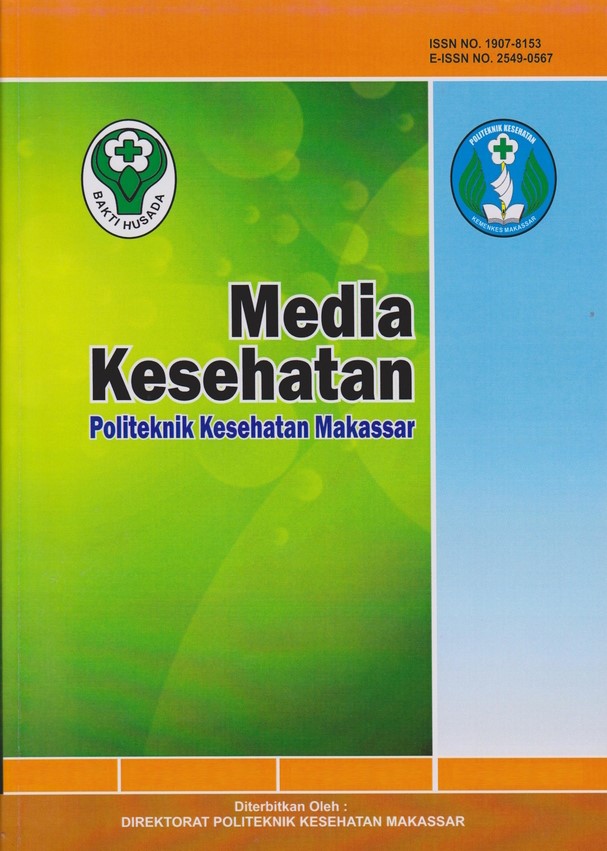Application of Microencapsulation Technology in Improving the Stability and Effectiveness of Active Ingredients in Cosmetic Products: A Literature Review
DOI:
https://doi.org/10.32382/medkes.v20i1.1451Keywords:
Cosmetic applications, efficacy, microencapsulated cosmetics, microencapsulation methods, stabilityAbstract
The cosmetics industry is growing rapidly in line with increasing public awareness of the importance of skin care and optimal appearance. Cosmetic products not only serve an aesthetic purpose but also protect the skin from external factors such as UV rays, aging, and pollution. Although many studies have discussed the advantages of microencapsulation, few have analyzed its application in finished cosmetic products. Therefore, this study aims to provide a deeper understanding of the application of microencapsulation in enhancing the stability and efficacy of active ingredients in cosmetic products. This review employs a literature review method based on nine selected scientific articles from national and international journals. Literature searches were conducted using PubMed and Google Scholar with keywords related to microencapsulation in cosmetic products. The results of the study indicate that microencapsulation can enhance the stability of active ingredients, protect them from degradation caused by environmental factors, and enable controlled release of active ingredients. Cosmetic products such as sunscreen gel, face cream, and blush have been successfully developed using microencapsulation technology. Additionally, microencapsulation improves user comfort by reducing unwanted odors or colors and minimizing the risk of skin irritation. This review also identifies technical limitations in microencapsulation methods and provides recommendations for further research to improve the application of this technology in the cosmetics industry for greater efficiency and sustainability. In conclusion, microencapsulation is an effective solution for enhancing stability, efficacy of active ingredients, and user experience quality in cosmetics.
Keywords: Cosmetic applications, efficacy, microencapsulated cosmetics, microencapsulation methods, stability
References
Resende DISP, Ferreira MS, Lobo JMS, Sousa E, Almeida IF. Skin Depigmenting Agents in Anti-Aging Cosmetics: A Medicinal Perspective on Emerging Ingredients. Appl Sci. 2022;12(2):1–15.
Hoang HT, Moon JY, Lee YC. Natural antioxidants from plant extracts in skincare cosmetics: Recent applications, challenges and perspectives. Cosmetics. 2021;8(4):1–24.
Oliveira C, Coelho C, Teixeira JA, Ferreira-Santos P, Botelho CM. Nanocarriers as Active Ingredients Enhancers in the Cosmetic Industry—The European and North America Regulation Challenges. Molecules. 2022;27(5):1–35.
Montoya-Yepes DF, Jiménez-Rodríguez AA, Aldana-Porras AE, Velásquez-Holguin LF, Méndez-Arteaga JJ, Murillo-Arango W. Starches in the encapsulation of plant active ingredients: state of the art and research trends. Polym Bull. 2024;81(1):135–63.
Siddique I. Comparing Vitamin C and Vitamin E in Improving the Photostability of a Retinol Serum Exposed to Heat Degradation. Jr Acad Res Artic. 2024;22(2):92–100.
Aspadiah V, Suryani, Wa Ode Sitti Zubaydah, Indalifiany A, Muliadi R. Review: Perawatan Kulit dengan Niacinamide Sebagai Bahan Aktif. Lansau J Ilmu Kefarmasian. 2023;1(1):69–76.
Azizah N, Putriana NA, Tugon TDA. Formulasi Dan Evaluasi Sediaan Toner Dari Ekstrak Biji Hanjeli (Coix Lacryma-Jobi L.) Sebagai Antioksidan. Maj Farmasetika. 2024;9(6):577–95.
Sousa VI, Parente JF, Marques JF, Forte MA, Tavares CJ. Microencapsulation of Essential Oils: A Review. Polymers (Basel). 2022;14(9):1–42.
Wulandari I. Mikroenkapsulasi Minyak Atsiri Daun Jeruk Nipis (Citrus aurantifolia) Menggunakan Penyalut Maltodekstrin dan Kitosan dengan Proses Freeze Drying Sebagai Antibakteri Pseudomonas aeruginosa. Universitas Islam Indonesia; 2022.
Mondéjar-López M, García-Simarro MP, Navarro-Simarro P, Gómez-Gómez L, Ahrazem O, Niza E. A review on the encapsulation of “eco-friendly” compounds in natural polymer-based nanoparticles as next generation nano-agrochemicals for sustainable agriculture and crop management. Int J Biol Macromol. 2024;28(6).
Ma’arif S, Peranginangin JM, Herdwiani W. REVIEW: PENGARUH ENKAPSULASI KURKUMIN TERHADAP AKTIVITAS ANTIOKSIDAN. Med Sains J Ilm Kefarmasian [Internet]. 2024 Feb 17;9(1):141–54. Available from: https://ojs.ummada.ac.id/index.php/iojs/article/view/897
Carvalho IT, Estevinho BN, Santos L. Application of microencapsulated essential oils in cosmetic and personal healthcare products – a review. Int J Cosmet Sci [Internet]. 2016 Apr 25;38(2):109–19. Available from: https://onlinelibrary.wiley.com/doi/10.1111/ics.12232
Casanova F, Santos L. Encapsulation of cosmetic active ingredients for topical application – a review. J Microencapsul [Internet]. 2016 Jan 2;33(1):1–17. Available from: http://www.tandfonline.com/doi/full/10.3109/02652048.2015.1115900
Drost EA. Validity and Reliability in Social Science Research. Educ Res Perspect. 2011;38(1):105–23.
Goertel RA. Literature Review. In: The Cambridge Handbook of Research Methods and Statistics for the Social and Behavioral Sciences [Internet]. Cambridge University Press; 2023. p. 65–84. Available from: https://www.cambridge.org/core/product/identifier/9781009010054%23CN-bp-4/type/book_part
Younas A, Ali P. Five tips for developing useful literature summary tables for writing review articles. Evid Based Nurs [Internet]. 2021 Apr 8;24(2):32–4. Available from: https://www.cambridge.org/core/product/identifier/9781009010054%23CN-bp-4/type/book_part
Cumpston MS, McKenzie JE, Welch VA, Brennan SE. Strengthening systematic reviews in public health: guidance in the Cochrane Handbook for Systematic Reviews of Interventions , 2nd edition. J Public Health (Bangkok) [Internet]. 2022 Dec 1;44(4):e588–92. Available from: https://academic.oup.com/jpubhealth/article/44/4/e588/6554940
Erwiyani AR, Sunnah I, Pratama NM. Formulation and Evaluation of Microcapsul of Pumpkin ( Cucurbita maxima D .) Extract Peel Off Gel Mask Formulasi Dan Evaluasi Sediaan Masker Gel Peel Off Mikrokapsul Ekstrak Labu Kuning ( Cucurbita maxima D .). 2024;11(3).
Lourith N, Kanlayavattanakul M. Sustainable approach to natural makeup cosmetics containing microencapsulated butterfly pea anthocyanins. Sustain Chem Pharm. 2023;32(9):1–11.
Bin MC, Assis LS, Gonçalves DA, Cardoso CAL, Alonso CP, de Melo AMMF, et al. Characterization, antioxidant capacity, and application of a microcapsule with essential oil from Campomanesia adamantium fruit residue in a cosmetic product. Cienc e Agrotecnologia. 2025;49:1–16.
Schatzer CA de F, Milazzotto MP, Júnior AR dos S, Cerchiaro G, Bernardi MM, Teodorov E. Microencapsulation of sunscreen reduces toxicity of its components to A. salina: Biochemical, behavioral and morphological studies. Ecotoxicol Environ Saf [Internet]. 2024;281(May):116586. Available from: https://doi.org/10.1016/j.ecoenv.2024.116586
Salam S, Divya V, Hijas M, Siraj N. Microencapsulation Technique for Sunscreen Gel Development: Enhancing Uv Protection. Indian Drugs. 2023;60(12):29–34.
Inthorn J, Sornmanee S, Sisopa P. ้ ม ั นเย ื่ อห ุ้ มเมล ็ ดฟ ั กข ้ าว ส าหร ั บผล ิ ตภ ั ณฑ ์ เซร ั่ มบ าร ุ งผ ิ ว Development of Alginate Beads Containing Momordica cochinchinensis Aril Oil for Skin Nourishing Serum Products. 2022;27(December):1452–74.
Gholap A, Tapkir A, More A, Kore P, Bagade P, Nale P, et al. Formulation and Evaluation of Antiaging Ointment Containing Microencapsulated Turmeric and Jojoba Oil. Int J Drug Deliv Technol. 2023;13(4):1297–304.
Surini S, Nursatyani K, Ramadon D. Home | Articles ViewEditOutline Gel Formulation Containing Microcapsules of Grape Seed Oil (Vitis vinifera L.) for Skin Moisturizer. J Young Pharm [Internet]. 2018 Feb 15;10(1):41–7. Available from: https://www.jyoungpharm.org/article/1088
Yeom J, Kang M, Goh A, Jeon J, Shim WS, Kang NG. Timed-Release Silica Microcapsules for Consistent Fragrance Release in Topical Formulations. Appl Sci. 2024;14(23).
Naveena B, Nagaraju M. Microencapsulation techniques and its application in food industry. Int J Chem Stud [Internet]. 2020 Jan 1;8(1):2560–3. Available from: http://www.chemijournal.com/archives/?year=2020&vol=8&issue=1&ArticleId=8652&si=false
Leon M. Si-based inorganic microencapsulation. Phys Sci Rev [Internet]. 2016 Mar 31;1(3). Available from: https://www.degruyter.com/document/doi/10.1515/psr-2015-0008/html
Romanssini SF, Scortegagna HDM, Pichler NA. Aesthetics and happiness in the perception of old people users of beauty products. Rev Bras Geriatr e Gerontol. 2020;23(3):1–9.
Tanuwidjaja T. Development of Anti-Aging Cream Preparations with Active Substances from Plant Extracts: Physicochemical Review and Potential Applications. J EduHealth. 2023;14(3):1310–25.
Pathak Y. The Skin Aging Process and Anti-Aging Strategies. Biomed J Sci Tech Res. 2022;42(2):33377–86.
Lee JH, Hwang YH, Noh M, Lee JH, Lee JB, Lee H. Microencapsulation of alcohol solvents and high-content actives for efficient transdermal delivery. Biomater Sci [Internet]. 2023;11(23):7531–40. Available from: https://xlink.rsc.org/?DOI=D3BM01411H
Tonthawi M, Musfiroh I. Review: Peningkatan Stabilitas Vitamin C dalam Sediaan Kosmetika. Maj Farmasetika [Internet]. 2023 Mar 20;8(3):194. Available from: http://jurnal.unpad.ac.id/farmasetika/article/view/44462
Shields CW, White JP, Osta EG, Patel J, Rajkumar S, Kirby N, et al. Encapsulation and controlled release of retinol from silicone particles for topical delivery. J Control Release [Internet]. 2018 May;278:37–48. Available from: https://linkinghub.elsevier.com/retrieve/pii/S0168365918301536
Tonthawi M, Musfiroh I. Review: Peningkatan Stabilitas Vitamin C dalam Sediaan Kosmetika. Maj Farmasetika. 2023;8(3):194–208.
Carvalho IT, Estevinho BN, Santos L. Application of microencapsulated essential oils in cosmetic and personal healthcare products - A review. Int J Cosmet Sci. 2021;38(2):109–19.
Das N, Roy PK, Pachuau L. Ionotropically cross-linked polymeric microparticles for drug delivery. In: Ionotropic Cross-Linking of Biopolymers [Internet]. Elsevier; 2024. p. 355–86. Available from: https://linkinghub.elsevier.com/retrieve/pii/B9780323961165000156
Vakarelova M, Zanoni F, Donà G, Fierri I, Chignola R, Gorrieri S, et al. Microencapsulation of astaxanthin by ionic gelation: effect of different gelling polymers on the carotenoid load, stability and bioaccessibility. Int J Food Sci Technol [Internet]. 2023 May 9;58(5):2489–97. Available from: https://academic.oup.com/ijfst/article/58/5/2489/7808232
Mardikasari SA, Suryani, Akib NI, Indahyani R. Mikroenkapsulasi Asam Mefenamat Menggunakan Polimer Kitosan dan Natrium Alginat dengan Metode Gelasi Ionik. J Farm Galen (Galenika J Pharmacy) [Internet]. 2020 Sep 30;6(2). Available from: https://bestjournal.untad.ac.id/index.php/Galenika/article/view/14589
Chan WS, Teoh KX, Leong Joey N, Che Zain MS. Spray Drying Microencapsulation of Antioxidant Bioflavonoids: A Bibliometric Analysis and Review on Recent Research Landscape (2013–2023) and Process Optimization. J Food Process Eng [Internet]. 2024 Nov 7;47(11). Available from: https://onlinelibrary.wiley.com/doi/10.1111/jfpe.14766
Banožić M, Vladić J, Banjari I, Velić D, Aladić K, Jokić S. Spray Drying as a Method of Choice for Obtaining High Quality Products from Food Wastes– A Review. Food Rev Int [Internet]. 2023 May 19;39(4):1953–85. Available from: https://www.tandfonline.com/doi/full/10.1080/87559129.2021.1938601
Jafari SM, Samborska K. Spray drying for the retention of food bioactive compounds and nutraceuticals – 150th anniversary of spray drying. Dry Technol [Internet]. 2021 Aug 16;39(12):1773–1773. Available from: https://www.tandfonline.com/doi/full/10.1080/07373937.2021.1972521
Strojewski D, Krupa A. Spray drying and nano spray drying as manufacturing methods of drug-loaded polymeric particles. Polym Med [Internet]. 2022 Aug 12;52(2):101–11. Available from: https://polimery.umw.edu.pl/en/article/2022/52/2/101/
Karthik P, Anandharamakrishnan C. Microencapsulation of Docosahexaenoic Acid by Spray-Freeze-Drying Method and Comparison of its Stability with Spray-Drying and Freeze-Drying Methods. Food Bioprocess Technol [Internet]. 2013 Oct 21;6(10):2780–90. Available from: http://link.springer.com/10.1007/s11947-012-1024-1
Łętocha A, Miastkowska M, Sikora E. Preparation and Characteristics of Alginate Microparticles for Food, Pharmaceutical and Cosmetic Applications. Polymers (Basel) [Internet]. 2022 Sep 14;14(18):3834. Available from: https://www.mdpi.com/2073-4360/14/18/3834
Zhang X, Yin W, Qi Y, Li X, Zhang W, He G. Microencapsulation of astaxanthin in alginate using modified emulsion technology: Preparation, characterization, and cytostatic activity. Can J Chem Eng [Internet]. 2017 Mar 6;95(3):412–9. Available from: https://onlinelibrary.wiley.com/doi/10.1002/cjce.22712
Silva CM, Ribeiro AJ, Figueiredo M, Ferreira D, Veiga F. Microencapsulation of hemoglobin in chitosan-coated alginate microspheres prepared by emulsification/internal gelation. AAPS J [Internet]. 2005 Dec;7(4):E903–13. Available from: http://link.springer.com/10.1208/aapsj070488
Sun H, Luo W, Huang X. Recent Advances in the Preparation of Protein/peptide Microspheres by Solvent Evaporation Method. Curr Pharm Biotechnol [Internet]. 2024 Oct;25(14):1807–17. Available from: https://www.eurekaselect.com/225246/article
Budiman A, Aulifa DL. Encapsulation of drug into mesoporous silica by solvent evaporation: A comparative study of drug characterization in mesoporous silica with various molecular weights. Heliyon [Internet]. 2021 Dec;7(12):e08627. Available from: https://linkinghub.elsevier.com/retrieve/pii/S2405844021027304
Li G, He Y, Han W, Yu Y, Zhu L, Si T, et al. An improved solvent evaporation method to produce poly (lactic acid) microspheres via foam-transfer. Int J Biol Macromol [Internet]. 2021 Mar;172:114–23. Available from: https://linkinghub.elsevier.com/retrieve/pii/S0141813021000507
Tao R, Fang Z, Zhang J, Ning H, Chen J, Yang C, et al. Critical Impact of Solvent Evaporation on the Resolution of Inkjet Printed Nanoparticles Film. ACS Appl Mater Interfaces [Internet]. 2018 Jul 11;10(27):22883–8. Available from: https://pubs.acs.org/doi/10.1021/acsami.8b06519
Li D, Zhao Y, Zhang Y, An J, Huang J, Yang J. Encapsulation of Hydrophobic-but-Not-Lipophilic Perfluoro Liquids Based on a Self-Assembled Double Emulsion Template via Solvent Evaporation Method. ACS Appl Mater Interfaces [Internet]. 2024 Sep 11;16(36):48428–37. Available from: https://pubs.acs.org/doi/10.1021/acsami.4c04926
Laina KT, Drosou C, Krokida M. Comparative assessment of encapsulated essential oils through the innovative electrohydrodynamic processing and the conventional spray drying, and freeze-drying techniques. Innov Food Sci Emerg Technol [Internet]. 2024 Jul;95:103720. Available from: https://linkinghub.elsevier.com/retrieve/pii/S1466856424001590
Downloads
Published
How to Cite
Issue
Section
PDF (Bahasa Indonesia) downloaded: 271















